Featured Comment:
“I made chashu for New Years so I had that and the marinade available for this recipe. It turned out great. Thank you for sharing this.”
– Ray
What is Chahan?
Chahan (チャーハン) is the Japanese word for Chinese-style fried rice. It comes from the Japanese pronunciation of the kanji used in Chinese “chǎofàn” (炒飯). Although Japanese has the word “Yakimeshi” (焼飯), which also means “fried rice,” the type served in Chinese restaurants and ramen restaurants is always called Chahan.
It is said that Chahan was brought to Japan by Chinese immigrants around 1860 and became a staple in Japanese homes as an excellent way to use up leftover rice.
Chahan is made with cooked rice, meat, egg, and vegetables. It’s often seasoned with soy sauce, salt and pepper. The Chahan in Japan is often topped with pink pickled ginger called “benishoga” which adds a refreshing taste to the dish.
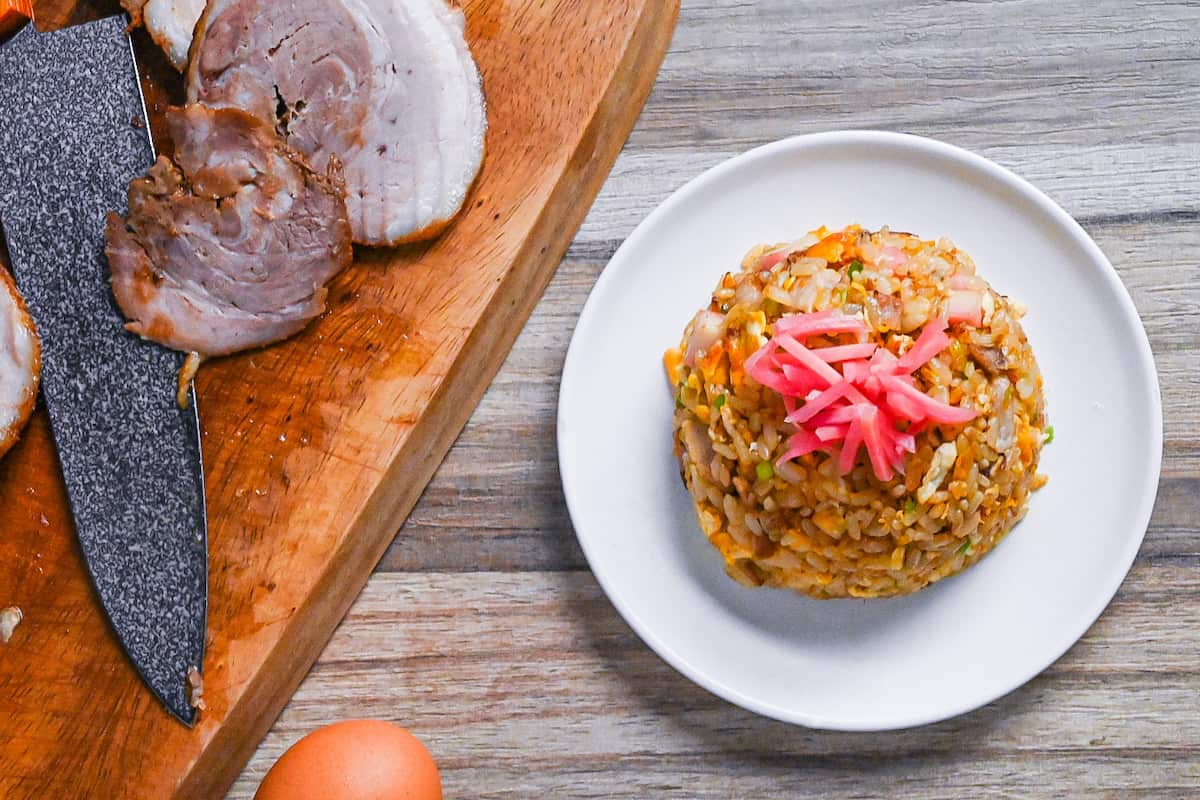

How I Developed This Recipe
Have you ever noticed that fried rice made at home just doesn’t taste quite the same as the one served at a ramen restaurant in Japan? I’ve been trying to figure out how to recreate that unique flavor for as long as I can remember. After lots of trial and error, I’ve finally figured it out.
The key to getting that restaurant-quality flavor at home is lard and a marinade made with chashu pork. These two ingredients work together to give the rice a flavor and richness that’s hard to achieve otherwise.
It’s been quite the journey of discovery and taste, and I’m excited to share the results with you. I hope you enjoy this fried rice as much as I do!
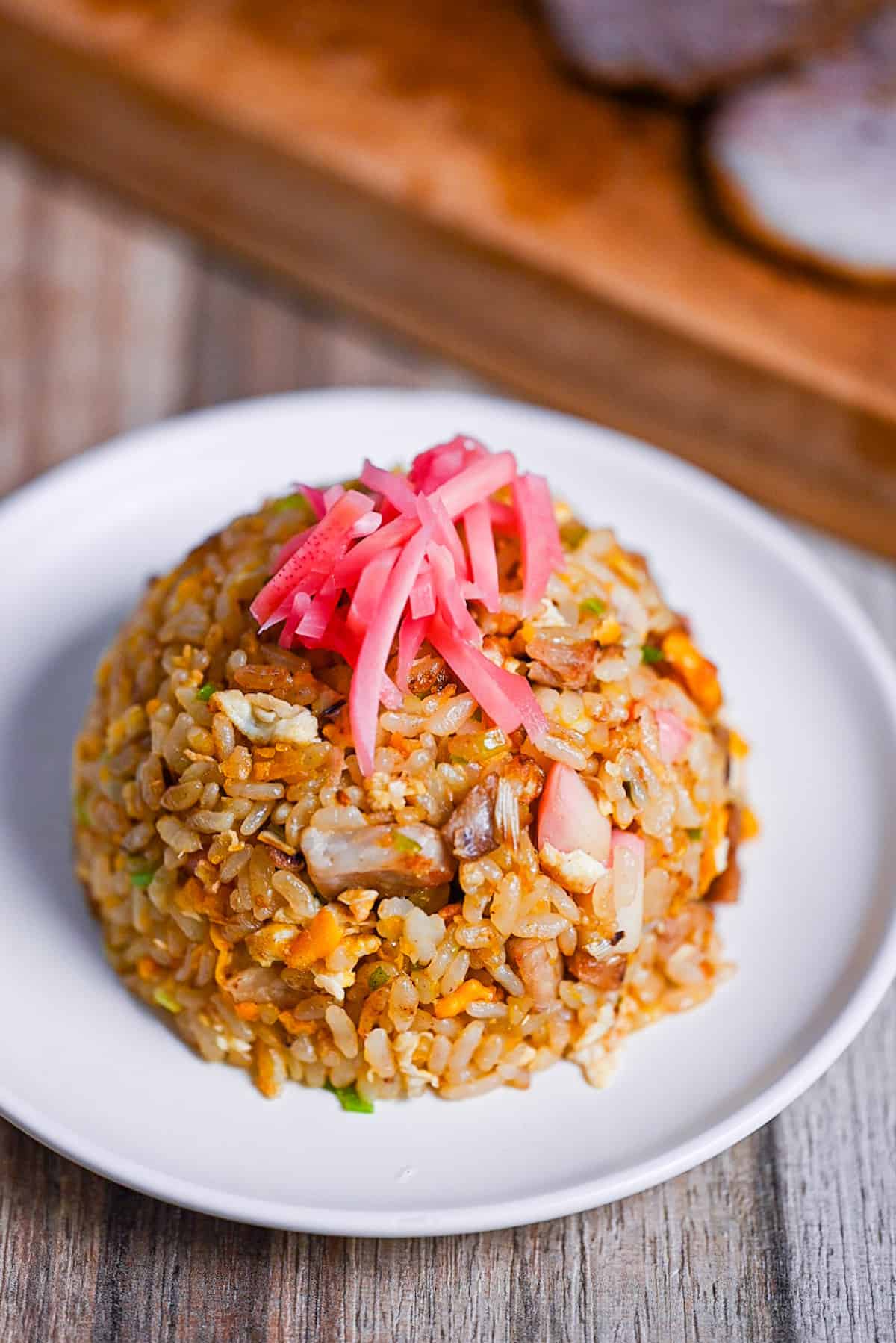
Ingredients & Substitution Ideas
- Pork chashu – Cut into small dice. If you do not use chashu pork, substitute another ingredient, such as leftover roast pork or roast chicken. If using raw meat, cook it first and fry the rice in the leftover fat and juices for the ultimate flavor.
- Japanese fish cake – This pink and white fishcake is usually served on ramen or udon. If it is not available, you can omit it, but the fish cake will bring your fried rice closer to ramen restaurant-style chahan.
- Green onion – Chop the white parts and use them. If you are going for ramen restaurant-style, it is not advisable to substitute onion or other ingredients here.
- Lard – If you do not want to use lard, substitute sesame oil. However, lard is essential for the flavor of ramen restaurant-style fried rice.
- Egg – This recipe is calculated with medium size eggs, but small or large size can be used.
- Cooked Japanese short-grain rice – It does not have to be freshly cooked rice; cold or frozen (reheated) rice is actually recommended since it’s less likely to stick together. If you want to know how to cook rice without a rice cooker, please see our recipe on how to cook Japanese rice.
- Fine white pepper – You may also use black pepper.
- Salt – 1% of the rice weight. I use fine sea salt.
- Chinese-style chicken bouillon powder – It adds slight depth to the rice.
- Chashu marinade – This homemade marinade combines pork stock (simmered with fresh onion, ginger and garlic) with soy sauce, sake, mirin and sugar. If you’re interested in making homemade chashu and its marinade, check out my chashu recipe. If you didn’t make chashu, check the recipe notes for the substitute.
- Red pickled ginger (benishoga) – This vibrant optional garnish add color and a refreshing sour kick to the dish.
If you’re not interested in making chashu, you can use any leftover meats for this recipe. And obviously, if you don’t make the Chashu you won’t have the leftover marinade. In this case, I recommend mixing the following:
- 1 tbsp tsuyu sauce
- 1 tsp sake
- 1 tsp mirin
- 1 tsp water
- 1/2 tsp grated ginger
- 1/2 grated garlic
- A pinch of sugar
Of course, it will never taste the same as if you used chashu and marinade, but this is pretty close to what I have found in my testing.
Jump to Full Recipe Measurements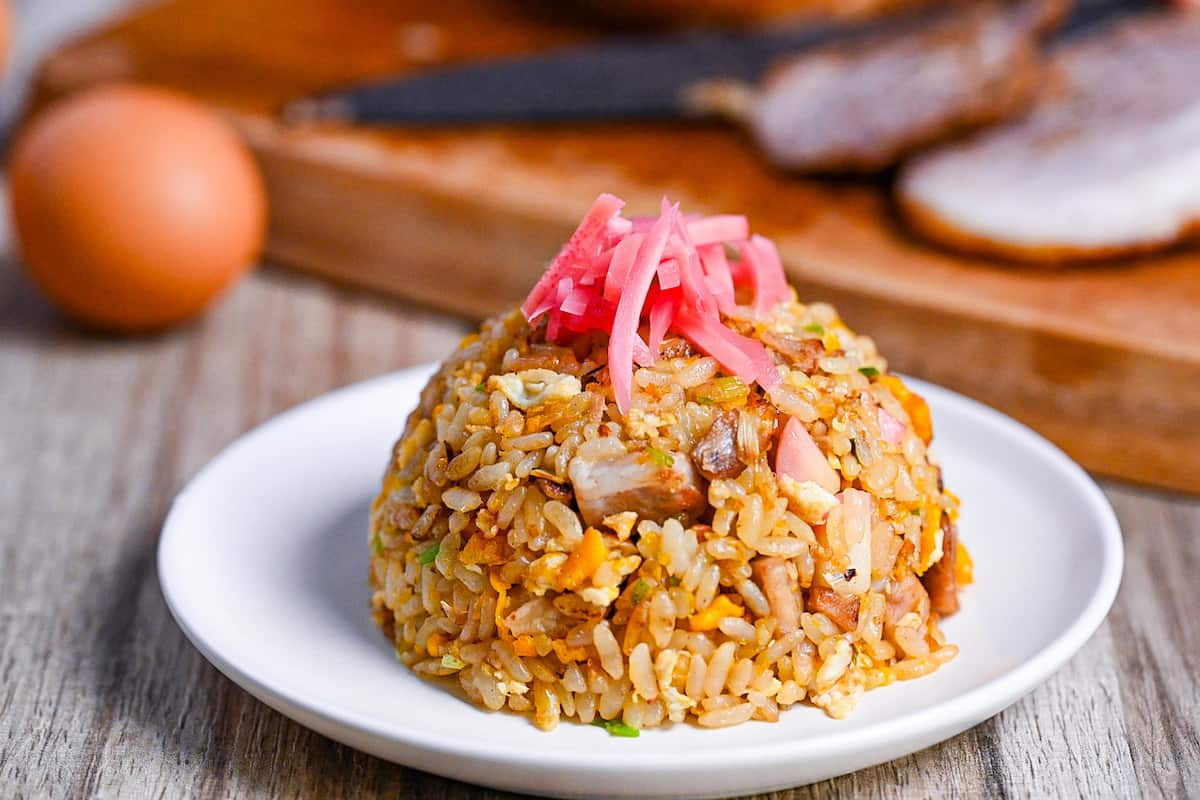
Visual Walkthrough & Tips
Here are my step-by-step instructions for how to make Ramen Restaurant-style Chahan at home. For ingredient quantities and simplified instructions, scroll down for the Printable Recipe Card below.
If you prefer to watch the process in action, check out my YouTube video of this recipe for a complete visual walkthrough!
Heat a wok over a high heat and melt the lard. If using sesame oil instead, use a medium heat to prevent burning.
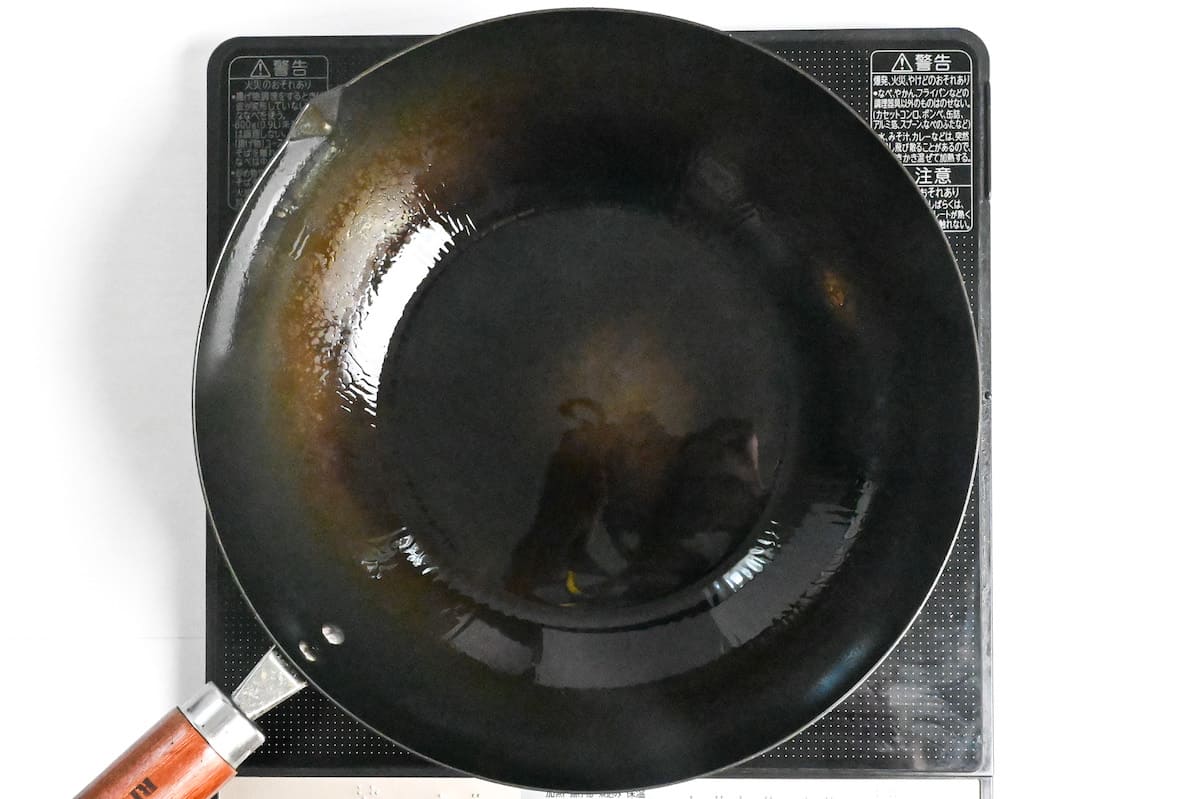
Crack the eggs directly into the wok and break the yolks. Fry until it reaches a runny scrambled consistency.
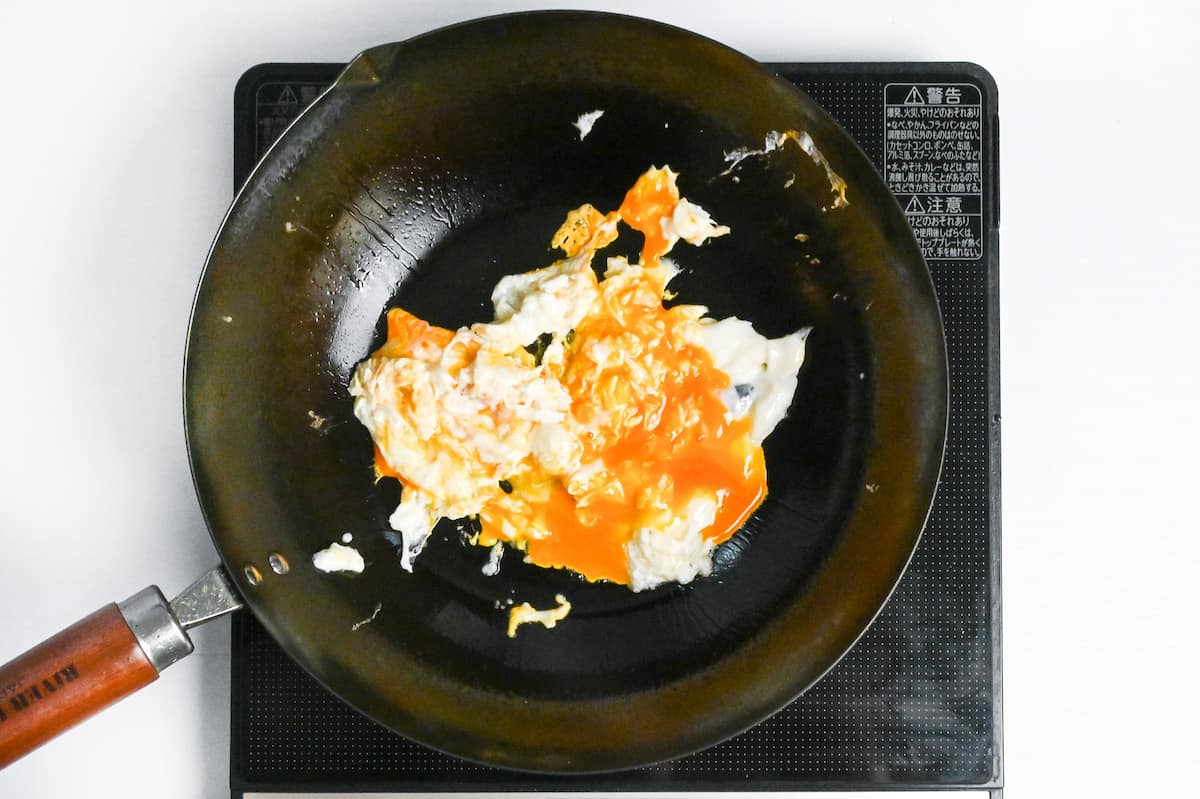
Add the rice and stir fry together until well combined.
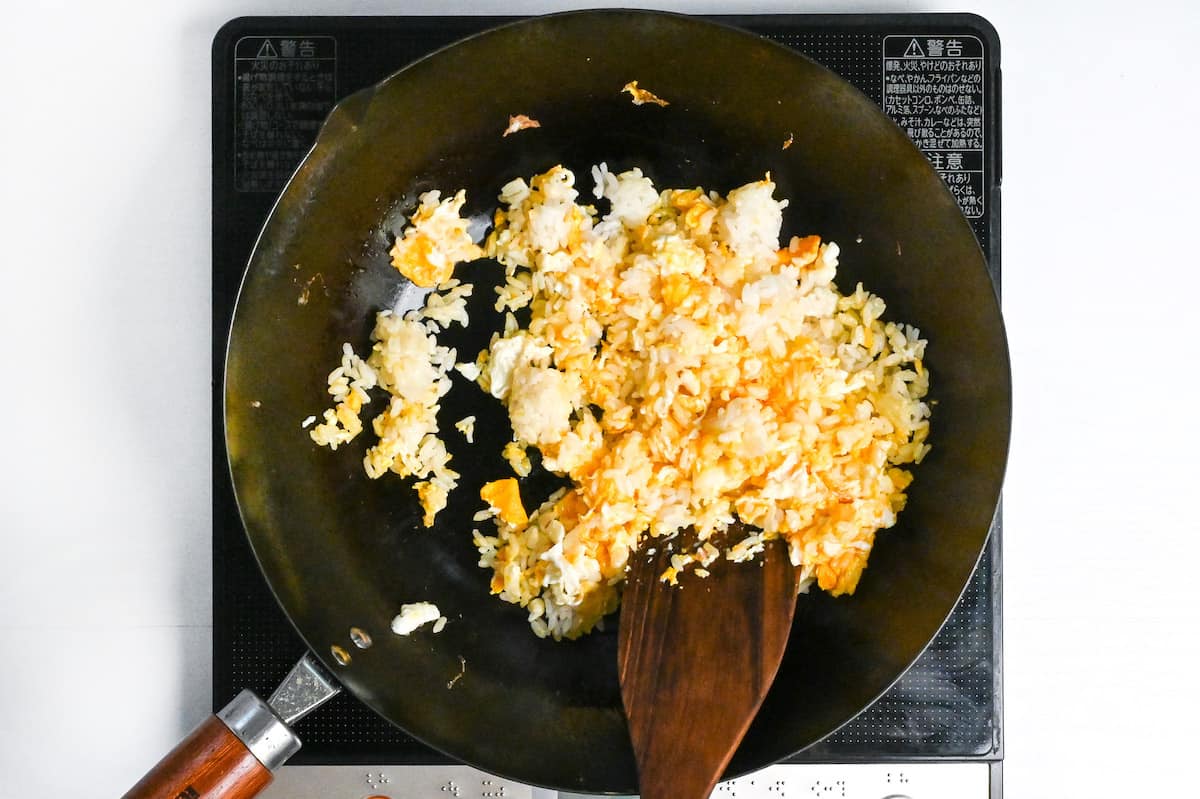
Add the chashu, kamaboko (fish cake), and green onion. They should be roughly chopped quite small so that they can be evenly distributed into the rice.
Stir fry until well incorporated.
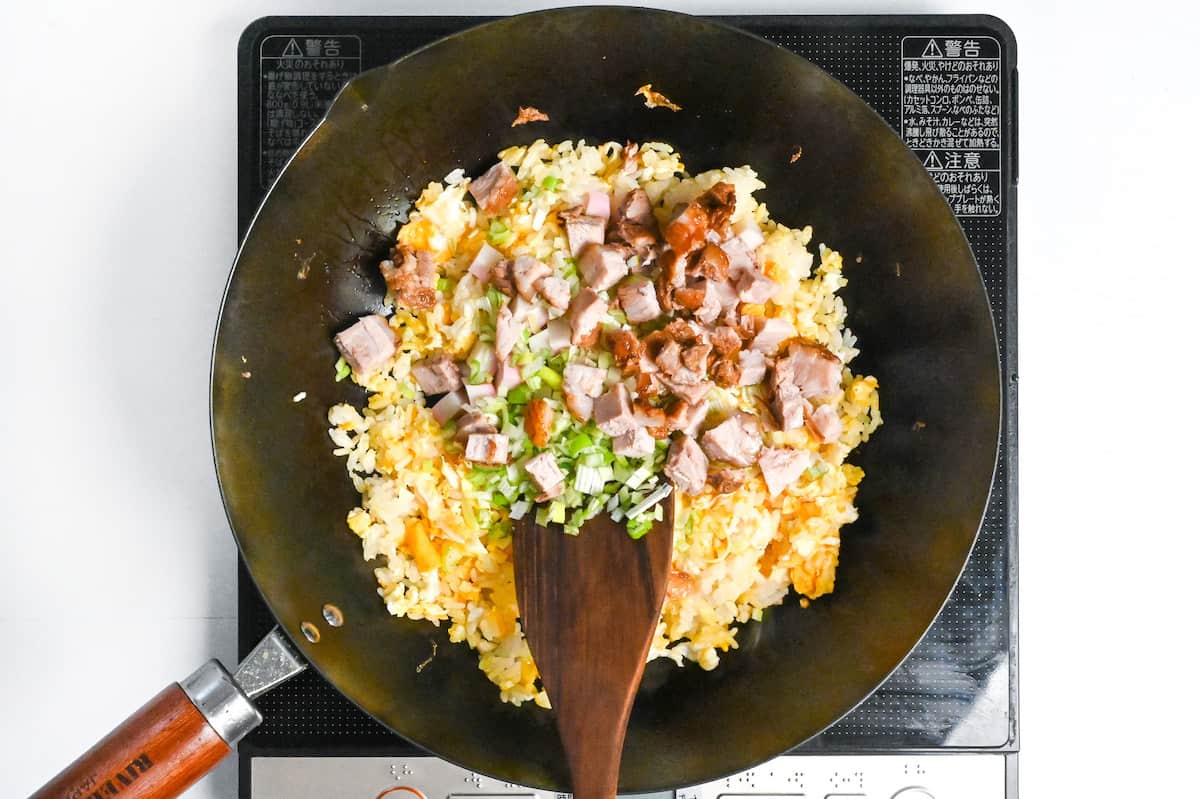
Add the chashu marinade, salt, fine white pepper, and Chinese chicken bouillon powder. Mix thoroughly.
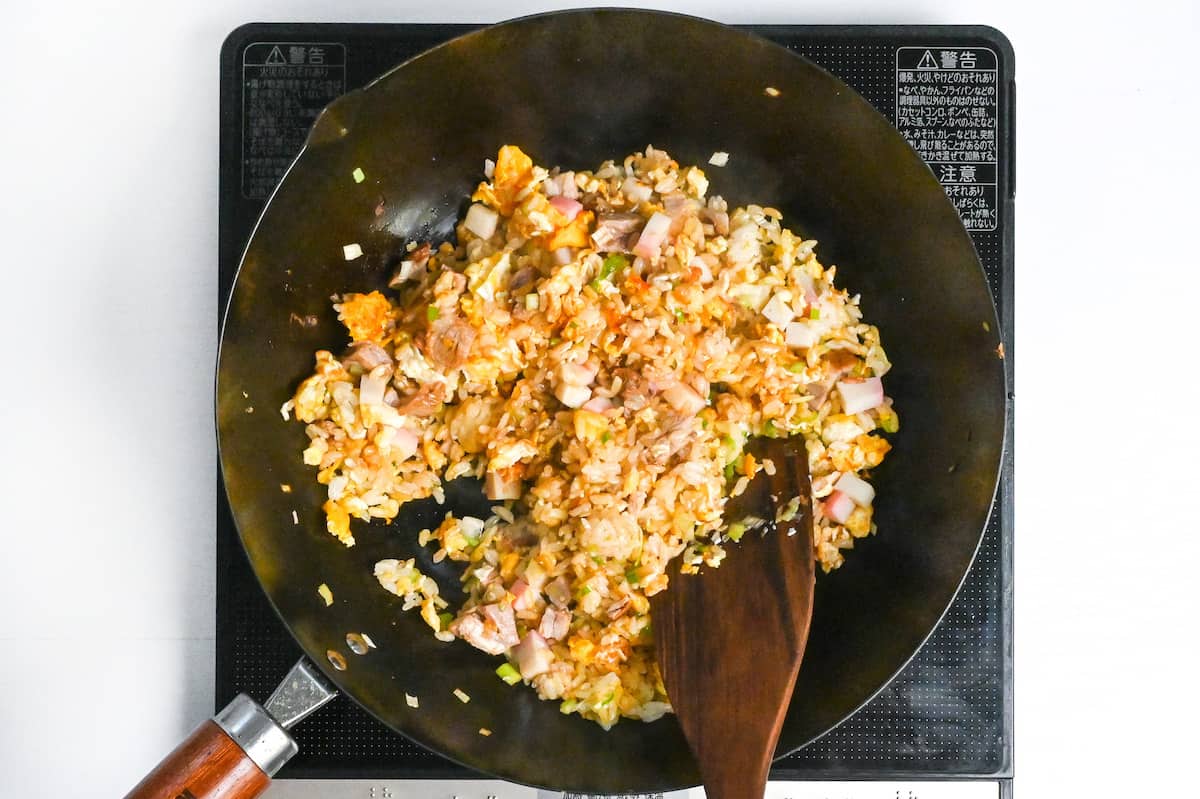
If you didn’t make chashu, make a substitute by mixing 1 tbsp tsuyu sauce, 1 tsp sake, 1 tsp mirin, 1 tsp water, ½ tsp grated ginger, ½ grated garlic, and a pinch of sugar.
Stir fry for 1-2 minutes or until the condiments have incorporated into the rice. Toss the rice occasionally to help dry it out slightly. (See video for example.)
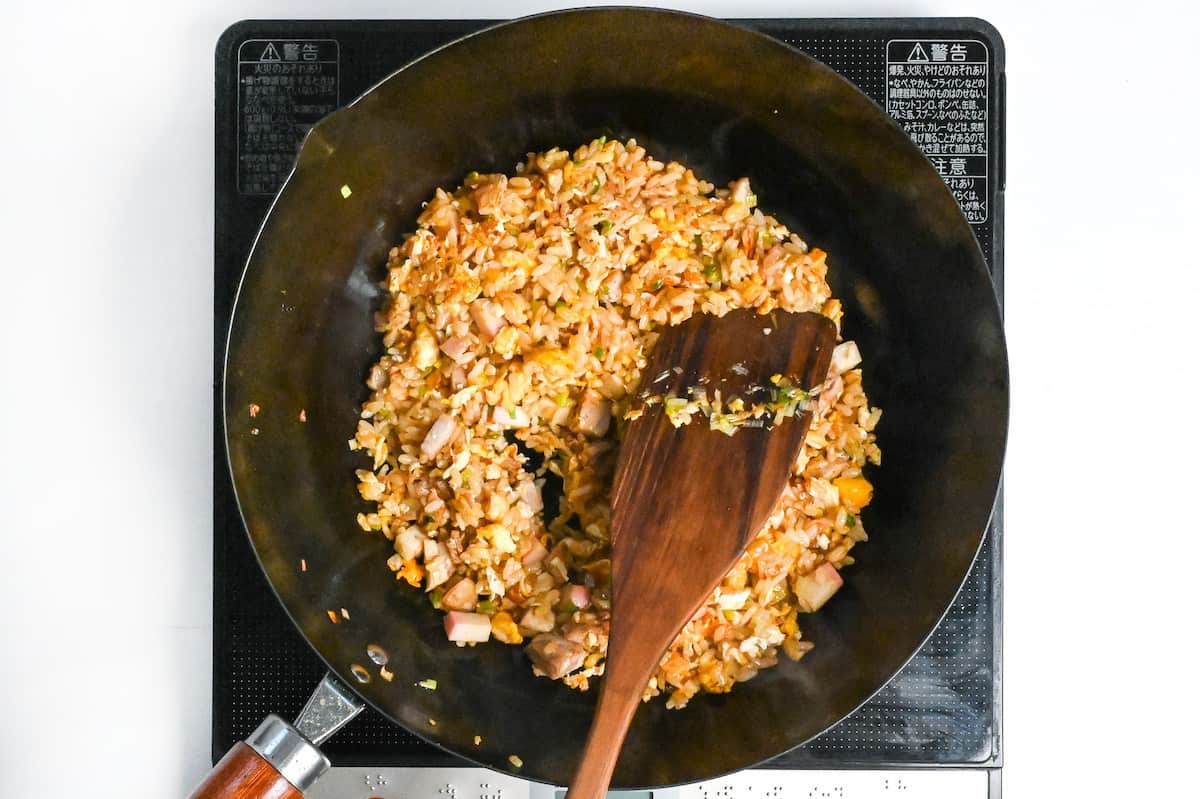
Pack the rice into a ladle or small bowl and flip it out onto a plate. Place a few pieces of red pickled ginger (benishoga) on top and serve.
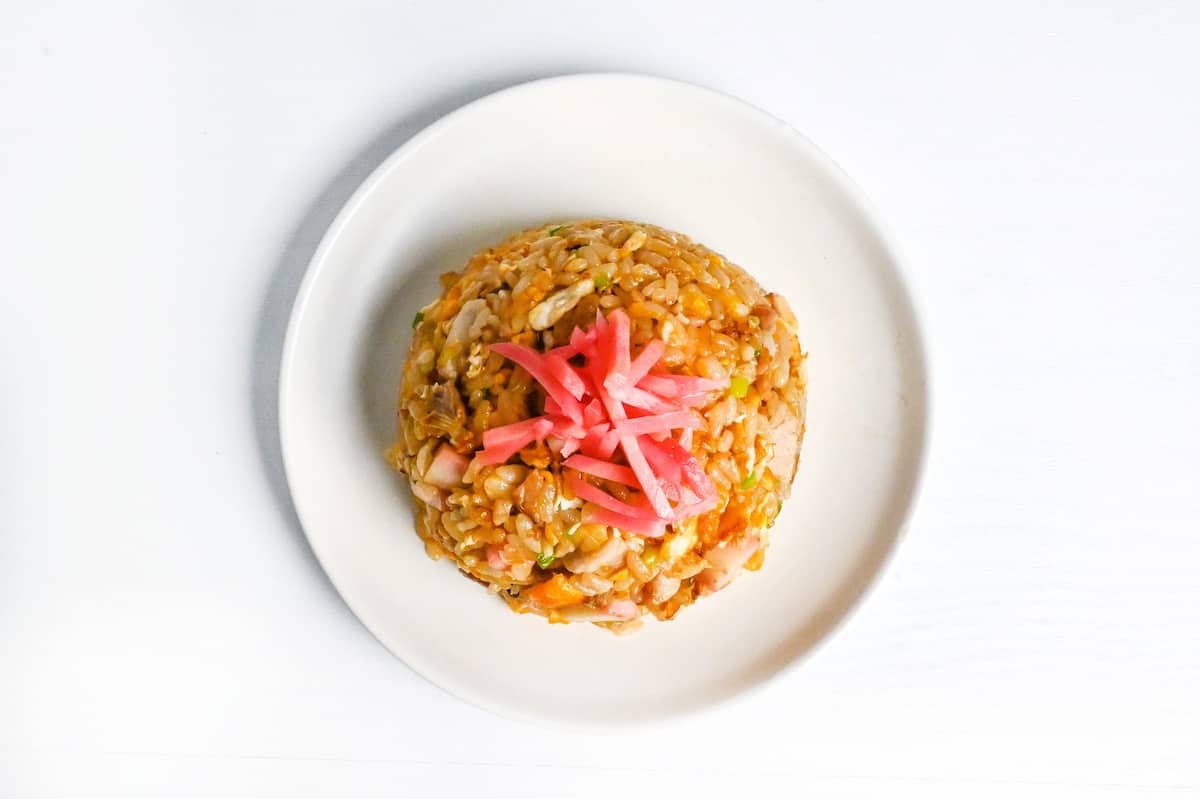
Enjoy it with ramen or your favorite chuka-style dishes!
Jump to Full Recipe MeasurementsHow to Store
To keep your fried rice safe to eat and delicious, it’s important to follow a few guidelines. Firstly, avoid storing it at room temperature. Instead, refrigerate it for up to 2 days or freeze it for up to a month.
When refrigerating, let the rice cool down before placing it in an airtight container like Tupperware. For best results, reheat in a frying pan or wok.
For freezing, wrap each serving tightly in plastic wrap or a Ziploc bag, ensuring it’s not exposed to air. Place the wrapped rice in a metal container or in aluminum foil with a cooling agent on top, then freeze it at a low temperature as soon as possible. Remove it from the metal container or foil before microwaving to reheat.
Storage summary
Room temperature – Not recommended.
Refrigerated – 1 to 2 days.
Frozen – Up to a month.
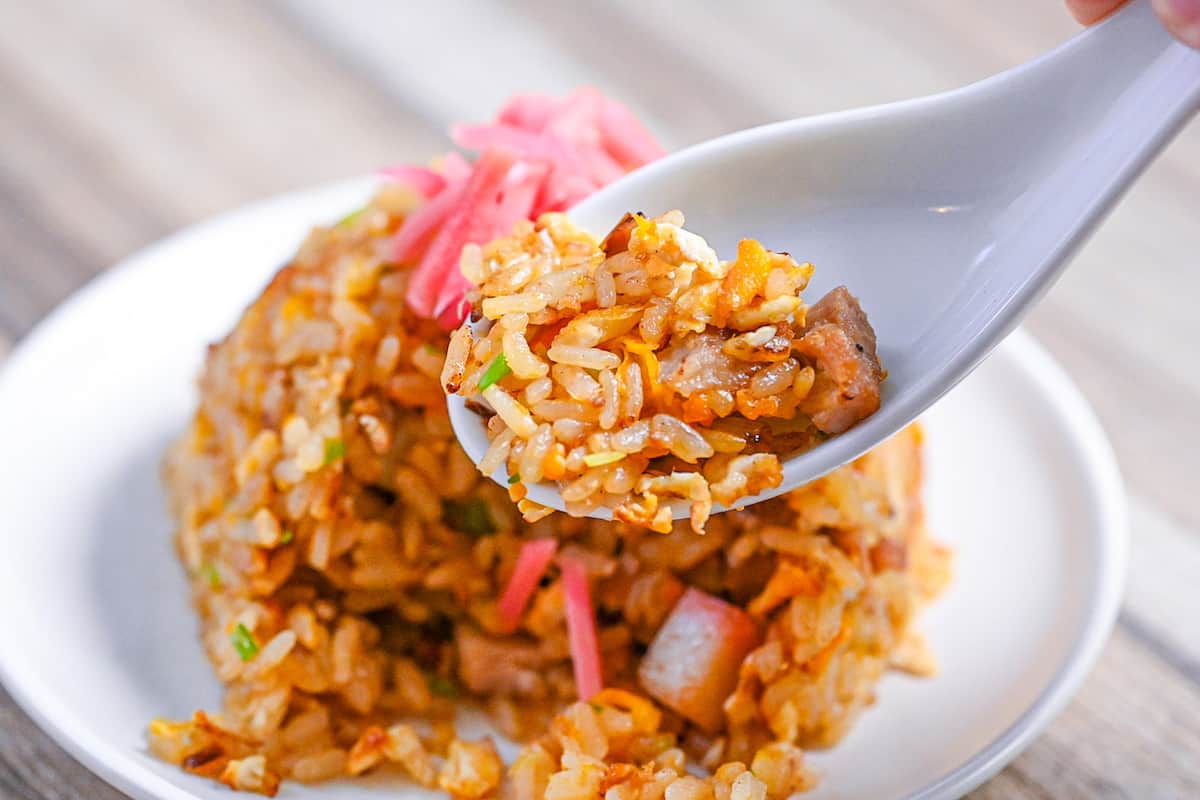
I hope you enjoy this Ramen Restaurant-style Chahan recipe! If you try it out, I’d really appreciate it if you could spare a moment to let me know what you thought by giving a review and star rating in the comments below. It’s also helpful to share any adjustments you made to the recipe with our other readers. Thank you!
More Ramen Restaurant-Inspired Recipes
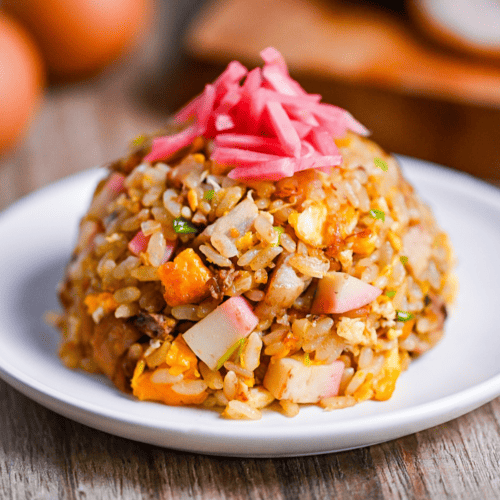
Chahan (Ramen Restaurant Style Fried Rice)
Equipment
Ingredients
- ½ tbsp lard
- 2 egg
- 200 g cooked Japanese short-grain rice
- 80 g pork chashu cubed
- 3 slices kamaboko fish cake (kamaboko) cubed
- ¼ Japanese leek (naganegi) white part, finely diced
- ¼ tsp ground white pepper
- 2 g salt 1% of the rice quantity, approx ¼ tsp per 200g
- ½ tsp Chinese-style chicken bouillon powder
- 2 tbsp chashu marinade see note for substitute
- red pickled ginger (benishoga) (benishoga) to garnish
My recommended brands of ingredients and seasonings can be found in my Japanese pantry guide.
Can’t find certain Japanese ingredients? See my substitution guide here.
Instructions
- Heat a wok on a high heat and melt ½ tbsp lard.

- Crack 2 egg into the wok and break it up while frying until it reaches a runny scrambled egg consistency.

- Add 200 g cooked Japanese short-grain rice, break it up and mix well.

- Once the eggs are cooked, add 80 g pork chashu, 3 slices kamaboko fish cake and ¼ Japanese leek (naganegi). Stir fry until the ingredients are well incorporated.

- Add 2 tbsp chashu marinade (if you didn't make chashu, see note for alternative) and sprinkle with 2 g salt, ¼ tsp ground white pepper and ½ tsp Chinese-style chicken bouillon powder.

- Stir fry for 1-2 minutes and occasionally toss to help dry out the rice a little. (See video for example.)

- Pack rice into a ladle or small bowl and flip it onto a plate. Garnish with red pickled ginger (benishoga) (benishoga) and serve.

- Enjoy!
Video
Notes
- If you don’t have chashu marinade, make a small mixture of 1 tbsp tsuyu sauce, 1 tsp sake, 1 tsp mirin, 1 tsp water, 1/2 tsp grated ginger, 1/2 grated garlic, and a pinch of sugar. It won’t be exactly the same as using chashu marinade, but it’s close enough.
- It’s better to use day old cooked rice for this dish. (Kept in the refrigerator overnight)
- If you use freshly cooked rice, let it cool first to prevent the rice clumping together. (Spread it out on a cookie sheet so it cools quickly and dries out a little.)
- This recipe is made using leftover chashu from my pork chashu recipe. If you want to make ramen style fried rice without making chashu, you can substitute for any other kind of leftover cooked meats.
- If you want to use raw meat in this recipe, it’s better to cook it first separately and then add it to the wok after the rice and eggs.
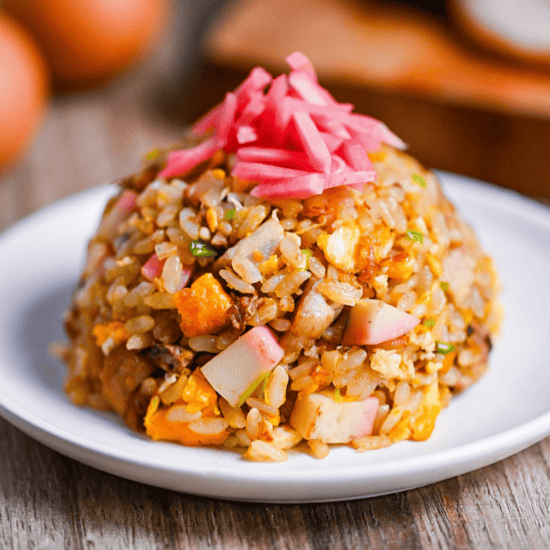




I made chashu for New Years so I had that and the marinade available for this recipe. It turned out great. Thank you for sharing this.
Hi Ray,
Thank you for your kind words and sharing your experience!
Yuto